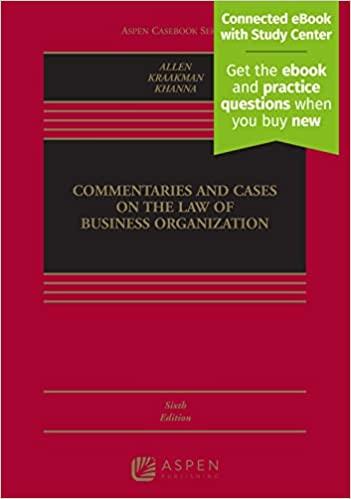Question
11.A consumer who conforms to the von Neumann-Morgenstern axioms is faced with four situations A, B, C, and D. She prefers A to B, B
11.A consumer who conforms to the von Neumann-Morgenstern axioms is faced with four situations A, B, C, and D. She prefers A to B, B to C, and C to D. Experimentation reveals that the consumer is indifferent between B and a lottery ticket with probabilities of 0.4 and 0.6 for A and D respectively, and that she is indifferent between C and a lottery ticket with probabilities of 0.2 and 0.8 for B and D respectively. Construct a set of von NeumannMorgenstern utility numbers for the four situations
12.A consumer who obeys the von Neumann-Morgenstern axioms and has an initial wealth of 160,000 is subject to a fire risk. There is a 5 percent probability of a major fire with a loss of 70,000 and a 5 percent probability of a disastrous fire with a loss of 120,000. Her utility function is U = .. She is offered an insurance policy with the deductibility provision that she bear the first 7620 of any fire loss. What is the maximum premium that she is willing to pay for this policy?
13.Determine the domain over which the production function q = 100(x1 + x2) + 20x1x2- 12.5( +
) is increasing and strictly concave.
14.Assume that an entrepreneur's short-run total cost function is C = + 17q + 66. Determine the output level at which he maximizes profit if p = 5. Compute the output elasticity of cost at this output.
15.An entrepreneur uses one input to produce two outputs subject to the production relation x
= A( + ) where , > . He buys the input and sells the outputs at fixed prices. Express his profit-maximizing outputs as functions of the prices. Prove that his production relation is strictly convex for q1, q2 > 0.
17.An entrepreneur uses two distinct production processes to produced two distinct goods, Q1 and Q2. The production function for each good is CES, and the entrepreneur obeys the equilibrium condition for each. Assume that Q1 has a higher elasticity of substitution and a lower value for the parameter than Q2. Determine the input price ratio at which the input use ratio would be the same for both goods. Which good would have the higher input ratio if the input price ratio were lower? Which would have the higher use ratio if the price ratio were higher?
18.Use Sherphard's lemma to find the production function that corresponds to the cost function
C = (r, and demonstrate that it is CE
19.A linear production function contains four activities for the production of one output using two inputs. The input requirements per unit output are
= = = = = = = =
Step by Step Solution
There are 3 Steps involved in it
Step: 1

Get Instant Access to Expert-Tailored Solutions
See step-by-step solutions with expert insights and AI powered tools for academic success
Step: 2

Step: 3

Ace Your Homework with AI
Get the answers you need in no time with our AI-driven, step-by-step assistance
Get Started


